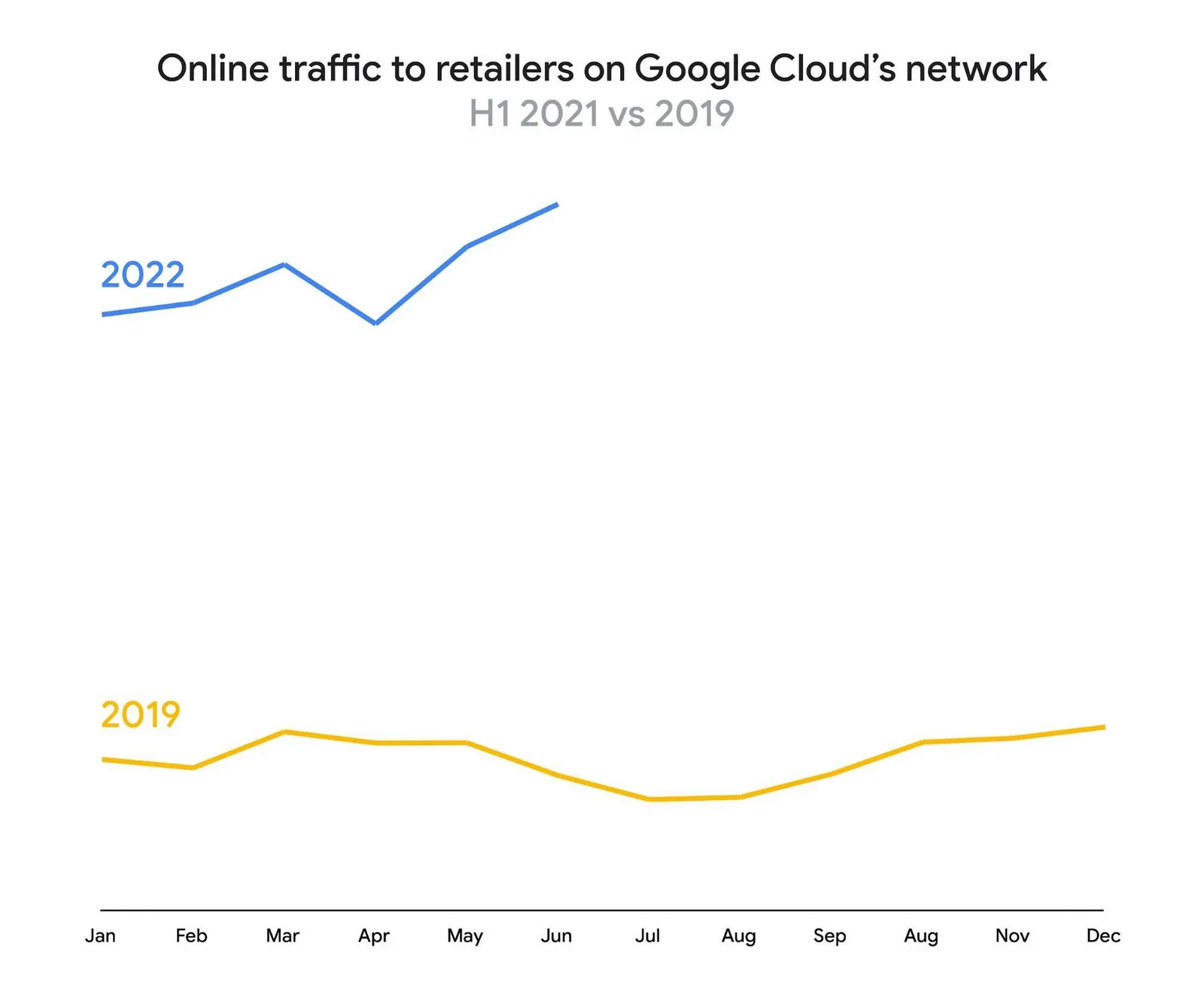Planning for the holiday shopping season is an annual challenge for retailers, but uncertainty caused by the pandemic, supply chain disruptions and rising prices have made preparations more difficult than before. Retailers are trying to read the tea leaves of what these challenges could mean for the year’s peak shopping season, and what new technology approaches they might take to drive success (and sales) this holiday season.
There’s always a lot for retailers to consider as they prepare for the peak shopping season, but we think there are three areas in particular that the industry has to get right—through the use of new technologies like cloud, data and analytics, artificial intelligence (AI) and machine learning (ML)—to meet the shifting demands shoppers this year and moving forward.
1. Product discovery: A retailer’s site search capability is its greatest strength or weakness

For years, retailers have seen sales move from in-store to online, a trend that accelerated during the pandemic. And looking at January to June 2022, online appears to have become more a part of shopping experiences than ever before.
Google Cloud’s retail customers globally, in total, saw more online network traffic in the first six months of 2022 than all of 2019 combined. (Google Cloud is a leading provider of cloud services to retailers globally, and we've been able to support our customers as they meet rising consumer interest in online shopping.)
With more people shopping (or at least browsing) online, retailers can’t afford to fumble the product discovery experience on their ecommerce sites. “Search abandonment”—when a person searches for a product on a retailer’s website but doesn’t find what they’re looking for—costs retailers more than $300 billion annually in the United States alone, according to a 2021 survey conducted by The Harris Poll and Google Cloud.
That same survey found that as many as 94% of U.S. consumers ditched an online shopping session because they received irrelevant search results on a retailer’s website. More than half, at 52%, say they abandon their carts and shop elsewhere if there’s at least one item they can’t find.
As the holiday season approaches, retailers should ensure their websites have a high-quality search and product discovery experience, using advanced search solutions that tap into AI and ML to help shoppers to find what they want. Over time, this can lead to higher purchase conversion, larger order sizes and ongoing brand loyalty.
2. Personalization: Shoppers say they like it when brands get it right
Recent research commissioned by Google Cloud found that 81% of U.S. shoppers appreciate when brands reach out to them in personalized ways. In fact, three out of four people prefer to shop with brands that are able to personalize interactions and outreach to them. And a full 86% want a brand that understands their interests and preferences. At the end of the day, 81% of U.S. shoppers say they’re more likely to buy from brands that understand them and personalize their products and services well.
This holiday season, we expect that the most successful retailers and brands will be those who have built a 360-degree view of their customers in privacy-preserving ways. By using tools like cloud-based customer data platforms, retailers can ensure in-demand products are in stock and deploy relevant and timely promotions. AI can help too, with trend-setting retailers already using Google Cloud’s Recommendations AI technology to deliver personalized product recommendations on their websites and mobile apps, tailored to each customer’s tastes.
3. Inventory: Stocked shelves that meet shifting preferences
While dealing with shifting consumer preferences isn’t new to retailers, they’ll need to think more critically and creatively about their inventory and how it's presented this holiday season. For example, do they have the right travel-specific clothing and accessories, or the gear one would need for a concert or a holiday get-together? And once a retailer has the right stuff, its availability needs to be accurately reflected online. Shoppers being able to see the products they want are available in a nearby store will be a major driver of sales success this holiday season.
How do retailers get this right without understocking or overstocking? Retailers lose more than $1 trillion a year in mismanaged inventory, according to IHL Group. And consider this, too: an Ipsos Survey commissioned by Google showed that apparel, beauty and home shoppers can spend up to two weeks researching products before their purchases. And 65% of shoppers browse online without looking for anything in particular.
One way to stay ahead of the curve—and match inventory, interest and timing—is to use AI and ML to achieve higher demand forecast accuracy and replace outdated inventory planning processes that can’t keep pace with a world that’s moving faster than ever. Retailers also need to capture the attention of both undecided browsers and buyers who know exactly what they want. To do that, sales and promotions need to be relevant and enticing, products need to be on the shelves and the in-store experience has to feel special.
Technology can help retailers navigate a new world.
Everyone wishes they had a crystal ball, but retailers can continue to invoke the oldest maxim of retail: know your customer’s needs and meet them where they are.
Today, retailers have a veritable universe of data at their fingertips—and the digital tools to give them the insights they need. Whether it’s delivering a positive search and browsing experience, making sure their online selections match brick-and-mortar inventory or personalizing the shopping experience, there are many ways for retailers to thrive this holiday season.
The world of retail is competitive and demanding, with little margin for error and there will always be new levels of complexity and uncertainty. But in sharing how technology tools can address these issues, we hope to help retailers rise to the challenge.
Originally posted on Transform with Google Cloud
*Source: Online traffic to retailers on Google Cloud's network aggregated and anonymized raw, network traffic to Google Cloud retail customers. Customer data is their data, not Google’s. We implement stringent security measures to safeguard our customers’ data and provide them with tools and features to control it on their own terms









